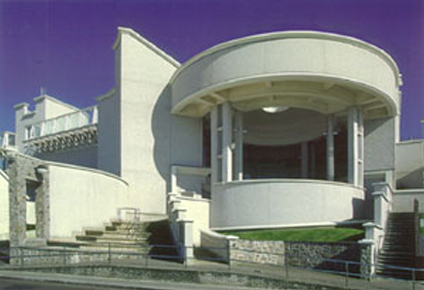Andrew Graham-Dixon travels down to the new Tate Gallery in St Ives only to discover that the scenery upstages the art it once inspired
THE NEW Tate St Ives has come in for a fair amount of misguided criticism, but perhaps the oddest reason so far given for disliking it is the fact that it only contains sufficient gallery space for the display of around 70 paintings and 20 sculptures. Only? 70 paintings and 20 sculptures from the St Ives school of timid English modernism should, surely, be enough for anyone. In fact, 70 paintings and 20 sculptures of any kind should amount to plenty for anyone - especially the kind of vagrant tourist visitor that a museum set in a holiday resort on the coast of Cornwall seems designed to attract - to look at with some degree of attentiveness in a single visit. The new museum should be commended, not criticised, for its modest scale.
There are plenty of other reasons not to dislike the Tate St Ives. Unlike other recent examples of Tate Gallery expansionism - the appalling Clore Gallery on Millbank, which does its best to muffle Turner's pictorial explosions with its Trust House Forte decor; or the scarcely better Tate Liverpool, with its cramped, low-ceilinged galleries, stunningly misconceived given the sheer scale of most of the contemporary art which it was designed to house - this is a reasonably attractive and spacious building which at least gives the impression that it wants to honour the spirit of the art that it contains.
Eldred Evans' and David Shalev's building necessarily echoes the shape of the gasworks that used to stand on the site but it also evokes the art that used to be made here: with its frequent juxtapositions of plane and curve, with...

A fine headstone for an artist's way of life
29-06-1993

